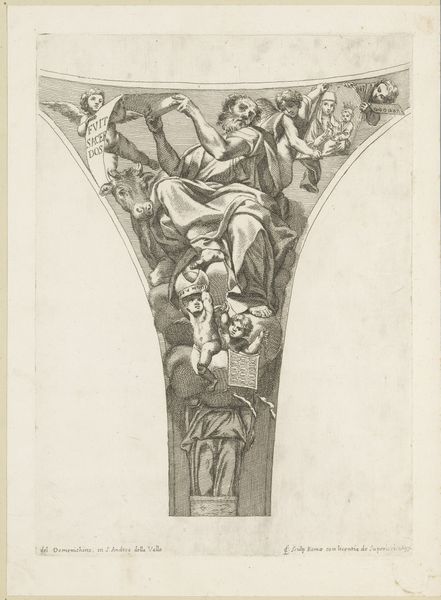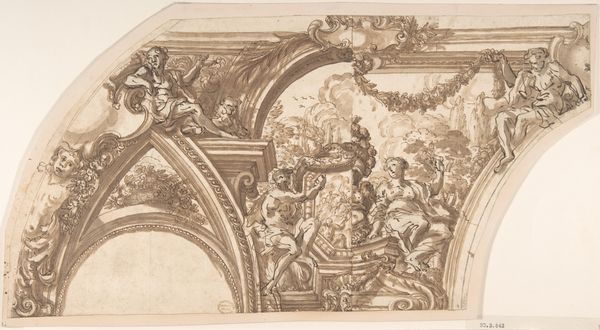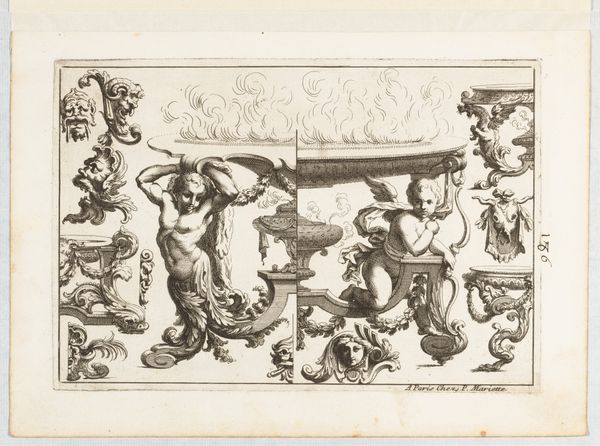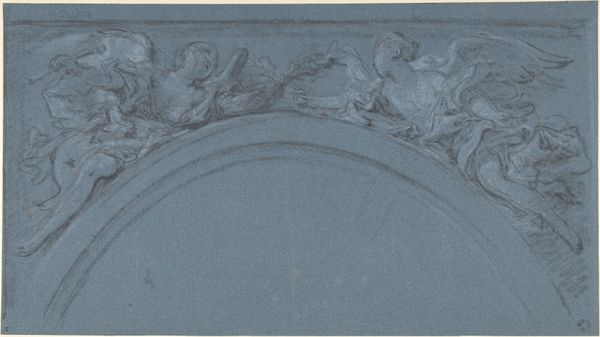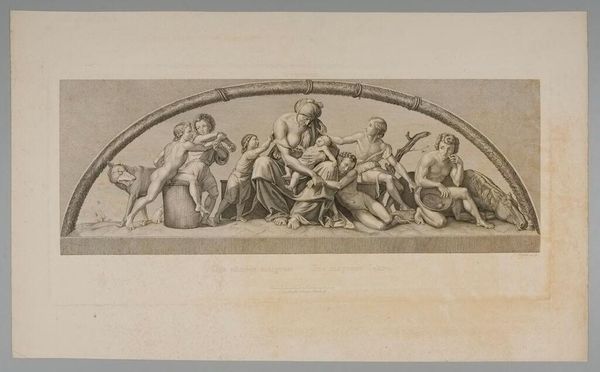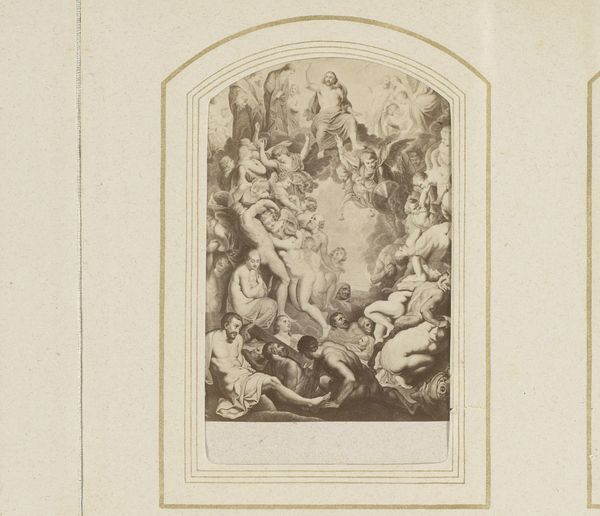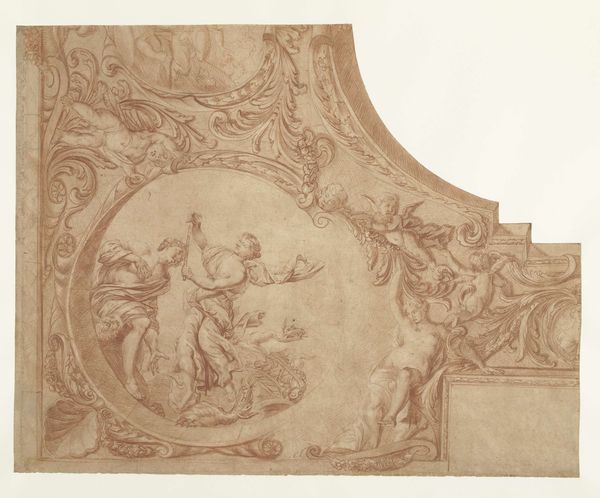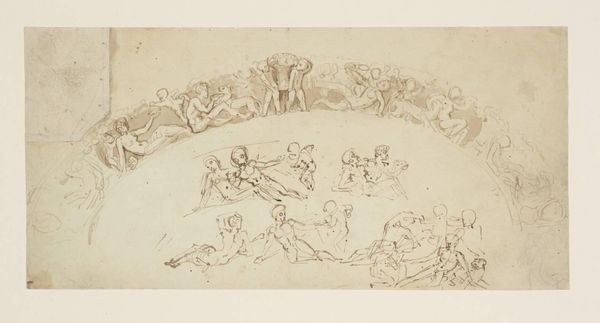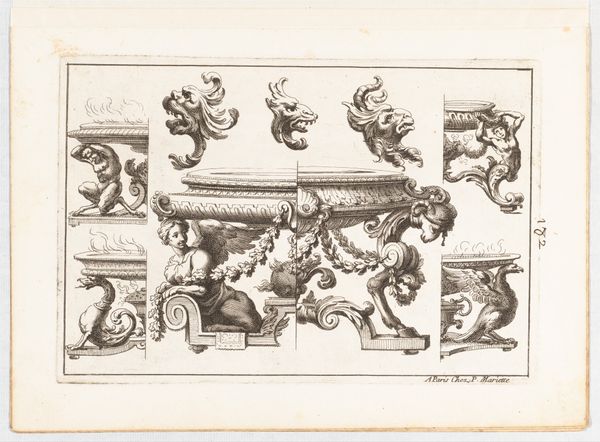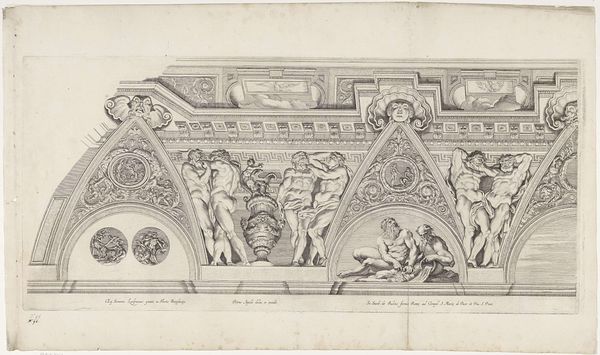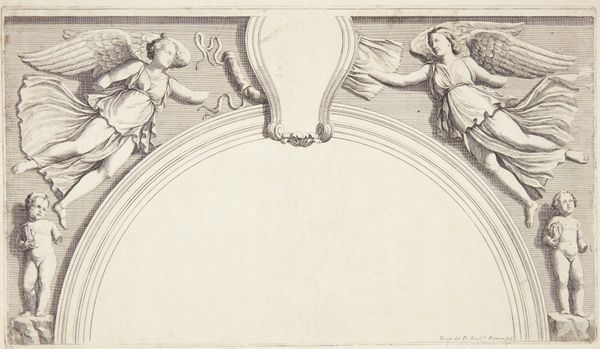
drawing, print, paper, ink, chalk
#
drawing
#
allegory
#
ink painting
# print
#
figuration
#
paper
#
11_renaissance
#
ink
#
chalk
#
italian-renaissance
Dimensions: 275 × 530 mm
Copyright: Public Domain
Editor: This is "Venus Pointing out Psyche to Cupid," an undated ink and chalk drawing currently held at the Art Institute of Chicago and attributed to the Workshop of Raphael. I’m struck by its composition. The figures are carefully placed within these arched spaces, but I’m wondering how we can interpret those placements more deeply. What do you see in the relationships formed by this design? Curator: Well, consider first the interplay between line and form. Notice how the ink work defines the musculature, creating volume and depth with hatching techniques, then look at how each semi-circular section frames individual figures or figure groupings. These frames serve less as supportive backgrounds and more as integral components within a narrative frieze. Where might one encounter friezes like these in early 16th century Italy? Editor: Presumably on a ceiling or other architectural component. So, the curved shapes would mirror that. How does the medium, ink, enhance the visual experience here? Curator: Exactly. Ink affords a certain fluidity and immediacy absent from more laborious mediums. Here, the varying line weights are not merely descriptive but inherently expressive; see how they denote not just form but also shifts in lighting conditions. That immediacy, for me, points us away from pure academic reproduction. Consider also the allegorical narrative itself: the relationship, as framed, is quite carefully designed, pointing at more conceptual intentions behind Cupid's gesture. The forms are, in fact, placed deliberately for optimal balance. Note how all figures are proportionally set so the viewer experiences each allegorical intention at the time of first seeing them. Editor: I see, so it is the medium's innate expressiveness, the semiotic use of each frame, and the intentional organization of forms, more than any surface symbolism, which provides a clear view into this drawing? Curator: Precisely. One cannot ignore the context surrounding a work, yet intrinsic aspects also reveal intention. Editor: This was eye-opening, really emphasizing observation skills by recognizing shapes within shapes, understanding intention through the medium itself. Thanks for guiding me. Curator: The pleasure was mine. It's rewarding to find meaning through compositional observation.
Comments
No comments
Be the first to comment and join the conversation on the ultimate creative platform.
